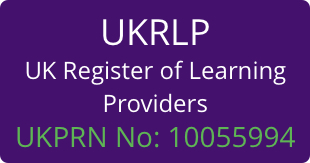
Senior leaders play a crucial role in shaping their workplace’s safety culture and in the process to drive health and safety across the organisation. When leaders show they care about safety, workers are much more likely to take it more seriously. Caring about safety shows employees that it isn’t just reactions to a situation or a tick box exercise to comply with legislation, but a meaningful initiative that can reduce injuries and save lives. This turns safety from something you react to into something you work on ahead of time. To ensure that workers engage with this, leaders need to shift the emphasis away from repetitive boring training, paperwork, increased workload and over emphasizing compliance.
Having said this, of course there must be strategic planning, dissemination of the health and safety laws and evidence of compliance to ensure that legal obligations are being met. But, if you’re losing interest at this stage, bear in mind the many other benefits to putting health and safety first. Evidence shows that those organisations who do put health and safety first cut costs, boost output, keep employees happier and loyal for longer, and build a better reputation. In the end, this makes them tougher to beat and more likely to succeed. However, leaders must not lose sight of the human elements of health and safety and caring about the welfare of those who work for them.

Here are some tips on how leaders can drive health and safety:
1. Lead by example
Leaders need to show employees that they adhere to all safety rules, put on the right protective equipment, and follow all the regulations, no matter whether they’re in the factory, at the desk, or visiting sites. Take should part in health and safety activities, training sessions and discussions.
2. Conduct regular walkthroughs and inspections
Routine workplace visits and checks help leaders stay in touch with real safety issues and shows employees that health and safety is a top priority and not just a policy documented. These walk throughs also give insights into any hazards and risks, non-compliance, and an opportunity to understand the safety challenges of day to day operations, helping leaders to stay informed.
3. Promote open communication
Talking face-to-face with staff about health and safety drives home the point that safety is everyone’s job embedded into daily work, and helps towards building a culture of safety. A leadership ‘open door’ policy enables staff to confidently discuss health and safety worries with leaders, and an opportunity for staff to report hazards without fear of retaliation.
Putting into action easy-to-use reporting systems, including options to report health and safety concerns, boosts the likelihood that problems will be flagged and dealt with. Staff should feel they have the power to halt unsafe work and take steps to fix it.
4. Ensure accountability
Accountability is critical to maintaining high safety standards. Leaders should embed safety responsibilities into the organisation, ensuring managers, supervisors and all employees understand what they need to do. Setting clear safety objectives in job descriptions and performance reviews helps to set expectations. Internal audits and tracking how well rules are followed can also highlight areas to improve and show how well safety plans are working.

5. Invest in health and safety training
Investing in high-quality health and safety training is crucial for improving compliance and reducing workplace risks.
This training gives employees the knowledge and skills to spot hazards, put safe practices into action, and take ownership of their own safety and the safety of others. This helps create an environment where everyone feels responsible for safety and creates a culture of accountability.
According to the Royal Society for the Prevention of Accidents (RoSPA) health and safety training is essential for preventing accidents and the associated financial and personal costs. It is also a legal requirement under Section 2 of the Health and Safety at Work etc. Act 1974 to ensure employees have the training necessary to ensure ‘as far as reasonably practicable’ that they can protect their own health and safety and that of others.
IOSH training courses, including IOSH Managing Safely, IOSH Working Safely, and IOSH Safety for Executives and Directors, ensure participants are up to date with the latest knowledge on risk management, compliance, and best practices.
6. Keep up to date with health and safety laws
Staying up to date with health and safety laws is essential for compliance, employee safety, and risk mitigation. Regulations evolve in response to emerging risks and legal updates, making it crucial for organisations to monitor changes.
7. Provide accessible health and safety policies
Safety policies that are clear and well-communicated play a crucial role in ensuring compliance. To be effective, these policies need to be easy to access simple to grasp, and updated on a regular basis. When policies are clear, it cuts down on confusion, which makes it simpler for employees to adhere to procedures.
Digital platforms, displays in the workplace, and translations in multiple languages make sure all employees can get their hands on the health and safety information they need. Using examples from real life and videos for training helps to boost engagement and improve understanding.
Sources:
asafe.com/thehiddencost/news/the-hidden-cost-of-accidents-on-business-reputation/
https://www.britsafe.org/media/5pgnkhzr/the-business-benefits-health-and-safety-literature-review.pdf







 UK: 0844 854 9218 | International: +44 (0)1488 580017
UK: 0844 854 9218 | International: +44 (0)1488 580017








